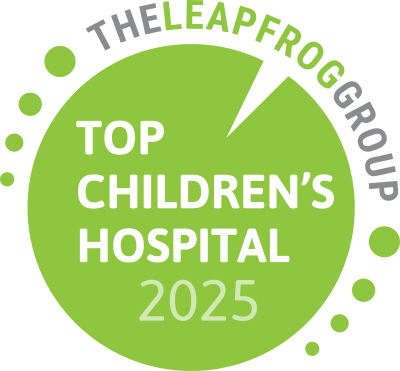ATLANTA, GA. - UCB today announced three collaborations aimed at examining the impact of seizure clusters on patient and caregiver quality of life. The collaborations with Le Bonheur Children's Hospital, the Wisconsin Health Information Organization (WHIO), and Yale University will uncover and leverage the power of education and real-world evidence (RWE) to address this research gap, expand awareness, and enact positive change in the health outcomes of individuals with seizure clusters.
Seizure clusters are episodes of increased seizure activity, during which two or more seizures occur within a 24-hour period. It is estimated that more than 150,000 people in the U.S. with uncontrolled epilepsy also experience seizure clusters. Due to their unpredictable nature, these disruptive events can leave those living with epilepsy feeling anxious, worried, frustrated, or isolated - further fueling a decline in mental health for this patient population.
"Our real-world evidence and educational collaborations with Le Bonheur Children's Hospital, the Wisconsin Health Information Organization, and Yale University illustrate our desire to meaningfully contribute to how physicians, patients, and the overall care system think about and treat seizure clusters. This includes how we frame and account for the value of treatments within the healthcare ecosystem," said Brad Chapman, Head, U.S. Epilepsy and Rare Syndromes at UCB. "We know that rescue medications that allow adults and adolescents to get back to their daily activities quickly is especially important, whether it's in the classroom or in day-to-day life, and we are committed to delivering solutions that further this ambition."
The project with Le Bonheur Children's Hospital focuses on improving the lived epilepsy patient experience by developing resources designed specifically for patients and caregivers that address the importance of the proper use of rescue medications outside the hospital. This "Ask the Experts" project seeks to combat identified gaps in patient and caregiver education and information as it relates to epilepsy and more specifically seizure clusters through the development of an educational resource and a video.
"We know most seizure clusters happen at home or during other daily activities; treating seizure clusters where and when they happen is critical for better patient outcomes," said Dr. James Wheless, BScPharm, MD, FAAP, FAAN, FAES, Co-Director of the Neuroscience Institute, Le Bonheur Children's Hospital. "As school starts and with COVID-19 still a medical concern, it's of the utmost importance that we prepare students to successfully start their school year with a seizure action plan and appropriate rescue medications so they can prepare their teachers and school nurses to act when the cluster starts."
The collaboration with WHIO aims to understand the economic and clinical impact of undertreating seizure clusters and to explore drivers of better outcomes. This project will analyze retrospective claims at a state level to examine prescribing trends, healthcare utilization, costs, access barriers, and disease prevalence.
Dr. George Morris, MD, MPH, FAAN, FAES, epileptologist in the Milwaukee-area, and valued partner in the WHIO Project, explains, "Epilepsy's impact on a person's health and their quality of life is significantly affected by seizure clusters. The health risk from aspiration and terrifying experience of the patient, family, and friends is unique to epilepsy. This project uses a unique data source to see the comprehensive effects across nearly all Wisconsin patients. We are excited to know what factors may help reduce seizure clusters to inform providers and patients about best practices."
The Yale University Project, Reduction of Seizures through Education and Support (ROSES), aims to increase understanding of seizure cluster management, to contribute new insights to clinical management and patientcentric care, and improve overall epilepsy quality care. Specifically, this study is designed to assess the impact of seizure rescue medications, treatment patterns, healthcare resource utilization, clinic quality improvement tools (i.e., Seizure Action Plans), and the patient/caregiver experience.
About Epilepsy1-4
Epilepsy is a chronic neurological disorder of the brain. It is the fourth most common neurological condition worldwide and affects approximately 65 million people. In the U.S. more than 3.4 million people have epilepsy. Anyone can develop epilepsy; it occurs across all ages, races and genders, and is defined as one or more unprovoked seizures with a risk of further seizures.
About Seizure Clustersi-10
Of the one third of patients living with uncontrolled epilepsy, it is estimated that more than 150,000 people in the U.S. with refractory epilepsy also experience seizure clusters. Seizure clusters are broadly defined as acute episodes of consecutive seizures that occur within a short period of time with a patient regaining consciousness during the interictal period. These clusters are also distinguishable from a person's typical seizure pattern. Other names for seizure clusters include acute-repetitive seizures (ARS), serial seizures, crescendo seizures, and seizure flurries, which highlight the repetitive nature of the seizures. Seizure clusters are a form of seizure emergency that can evolve into prolonged seizures or status epilepticus.
About UCB in Epilepsy
UCB has a rich heritage in epilepsy with over 20 years of experience in the research and development of antiepileptic drugs. As a company with a long-term commitment to epilepsy research, our goal is to address unmet medical needs. Our scientists are proud to contribute to advances in the understanding of epilepsy and its treatment. We partner and create super-networks with world-leading scientists and clinicians in academic institutions, pharmaceutical companies, and other organizations who share our goals. At UCB, we are inspired by patients, and driven by science in our commitment to support patients with epilepsy.



